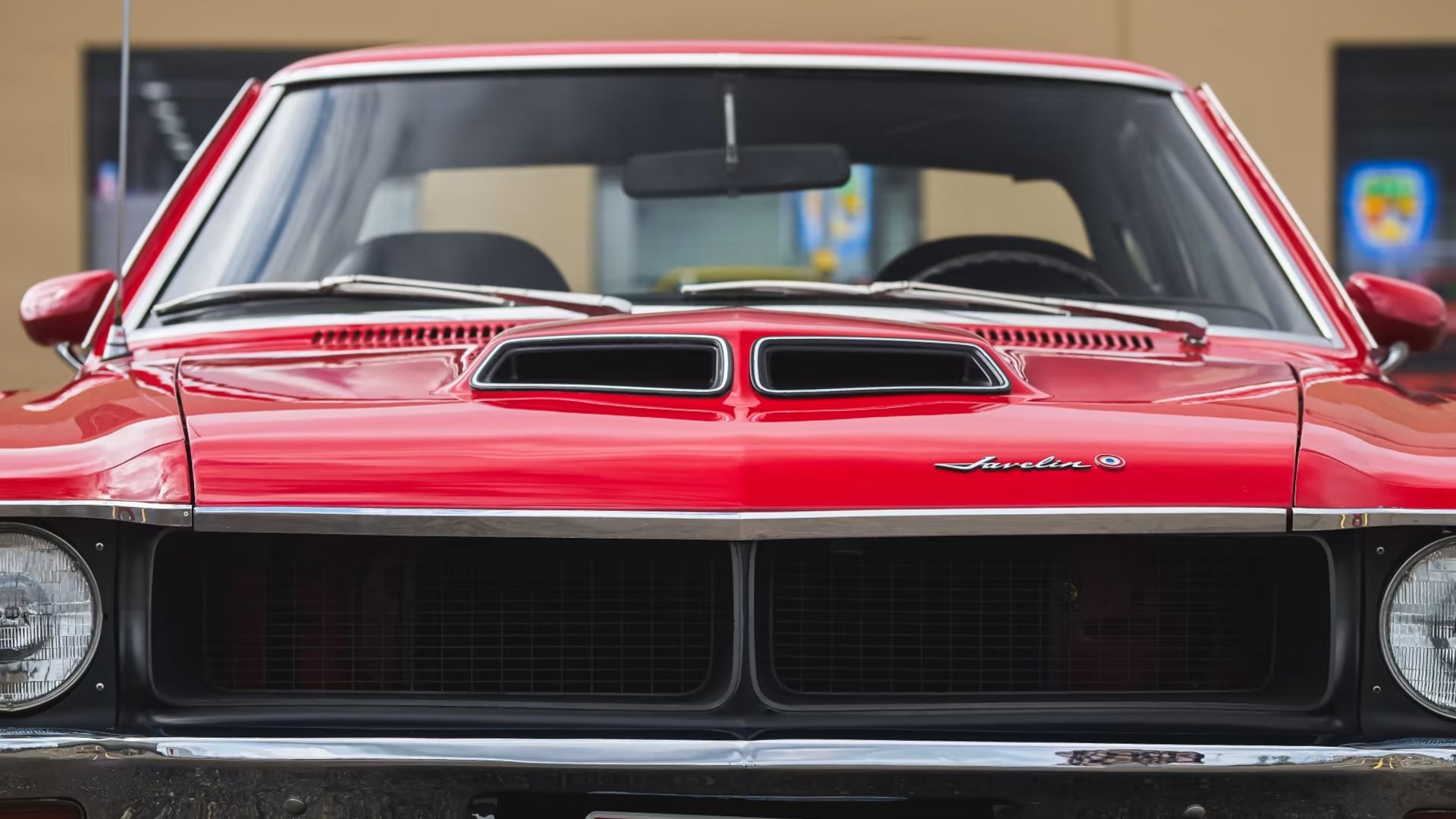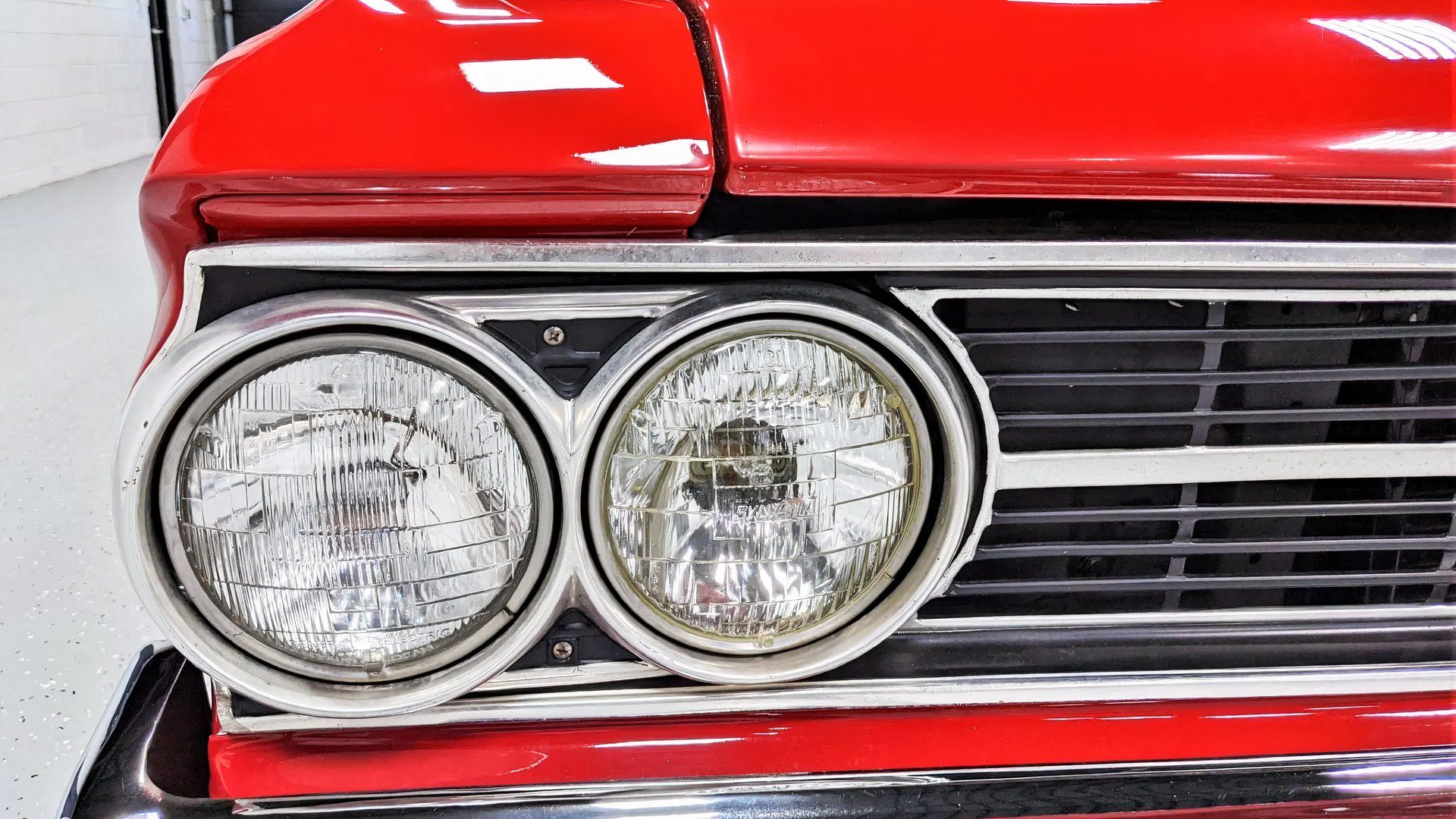It’s the age-old conversation – what is quicker,
a pretty European sports car
or a brutish, all-American muscle car? Throughout the decades, the USA and Europe have often had very different approaches to going fast. European manufacturers have normally gone for smaller engines and lighter weight, while in the US there is often no replacement for displacement.
HotCars went on a mission to find out which cars throughout the ages were quicker, picking models from both America and Europe that had some similarities, whether that was the price, the type of car, or even just the power output, to see where the good old-fashioned muscle car has the edge. The results are often surprising, with many muscle cars beating far more exotic European sports cars when they launched on the market. We have arranged the models with the earliest first and the latest last. This is what we found.

Related
10 American Muscle Cars That Are Rarer Than A Ferrari Enzo
These classic American muscle cars are far more difficult to find than the Prancing Horse’s legendary halo model.
10
The 1963 Aston DB5 Is No Match For A 1964 Pontiac GTO
Aston Martin DB5 Vs Pontiac Tempest GTO Specs Comparison
|
1963 Aston Martin DB5 |
1964 Pontiac Tempest GTO |
|
|
Engine |
4.0-liter straight-six |
6.4-liter V8 |
|
Power |
278 hp |
348 hp |
|
Torque |
280 lb-ft |
428 lb-ft |
|
0-60 mph |
7.1 seconds |
6.6 seconds |
Source: Aston-Martin/ Pontiac
A well-known car magazine famously did a fictional test between a Ferrari 250 GTO and a 1964 Pontiac Tempest GTO, the latter being the car that kicked off the muscle car era. The Ferrari cost $20,000 in 1964, against the GTO’s sticker price of $2,852, so perhaps it’s not a true competitor, so we went in search of something that was a bit closer to the Pontiac. Aston Martin’s DB5 was launched in 1963 with a price of £4,175 ($5,390) and fitted with a 4.0-liter straight-six. While the DB5’s 7.1-second sprint to 60 mph is impressive (and enough to beat the standard GTO’s 7.7 seconds) it is bested by the GTO when fitted with a Tri-Power carburetor option, good for 348 horsepower at 4,900 rpm.
9
A 1967 Shelby GT500 Can Outrun A 1966 Jaguar E-Type
Ford Mustang GT500 Vs Jaguar E-Type Specs Comparison
|
Ford Mustang GT500 |
Jaguar E-Type |
|
|
Engine |
4.6-liter V8 |
4.2-liter V8 |
|
Power |
360 hp |
265 hp |
|
Torque |
420 lb-ft |
283 lb-ft |
|
0-60 mph |
6.5 seconds |
7.4 seconds |
Source: Ford/ Jaguar
The GT500 Mustang is one of the most iconic muscle cars out there. Ford and Carroll Shelby followed up the incredible track-oriented GT350 with a big-block variant, the GT500. Under the hood of the GT500 was a 428-cid “Police Interceptor” V8. The engine appeared in other, larger Fords of the day, but with twin Holley four-barrel carburetors, it produced 360 horsepower and 420 lb-ft of torque. The GT500 can hit 60 mph in 6.5 seconds, which is enough to outrun a 1966 Jaguar E-Type.

Related
The Last True Pontiac Muscle Car Is Now a Bargain
Just before Pontiac folded, the brand made one last epic muscle car – their fastest one ever.
8
A 1968 Dodge Hemi Charger R/T Will See Off A 1969 Porsche 911S coupe
Dodge Hemi Charger R/T Vs Porsche 911S Specs Comparison
|
Porsche 911S |
Dodge Hemi Charger R/T |
|
|
Engine |
2.2-liter flat-six |
7.0-liter Hemi V8 |
|
Power |
180 hp |
425 hp |
|
Torque |
130 lb-ft |
490 lb-ft |
|
0-60 mph |
6.5 seconds |
4.8 seconds |
Source: Porsche/ Dodge
In the late ’60s, the Dodge Hemi Charger R/T was one of the stars of the muscle car scene, with a 7.0-liter V8 that pumps out 425 horsepower and 490 lb-ft. But over in Europe there was another legendary sports car that was taking over: the 911. With an unusual, air-cooled rear-engine layout, it may have seemed like an oddball, but it would go on to be one of the most iconic performance cars on the planet – just like the Charger. With a 180-horsepower flat-six, the 911S of 1969 was quick, but not quick enough to keep up with a Dodge Hemi Charger R/T.
7
A 1970 Chevrolet Chevelle 454 Accelerates Quicker Than A 1970 Maserati Ghibli
Chevrolet Chevelle 454 Vs Maserati Ghibli Specs Comparison
|
Maserati Ghibli |
Chevrolet Chevelle 454 |
|
|
Engine |
4.7-liter V8 |
7.4-liter V8 |
|
Power |
310 hp |
360 hp |
|
Torque |
341 lb-ft |
500 lb-ft |
|
0-60 mph |
6.8 seconds |
6.0 seconds |
Source: Chevrolet/ Maserati
The 1970 Chevelle SS is an iconic muscle car, and fitted with the LS5 454, it is going to be up there in most people’s dream garage. Fitted with this option, the Chevelle has a monster 360 horsepower and 500 lb-ft of torque (450 horsepower and 500 lb-ft of torque for the rare LS6). This was enough to propel it to 60 mph in 6.0 seconds (and less in the LS6). The 1970 Maserati Ghibli also had a V8, this time a dry-sump, twin-cam 4.7-liter, and power wasn’t that far off the Chevelle SS. The Ghibli has 310 horsepower and 341 ft-lb of torque, but it’s only enough to get the Italian car to 60 mph in 6.8 seconds.
6
The 1987 Buick GNX Would Leave A 1985 Ferrari Testarossa In A Drag Race
1987 Buick GNX Vs 1985 Ferrari Testarossa Specs Comparison
|
Buick GNX |
Ferrari Testarossa |
|
|
Engine |
3.8-liter turbocharged V6 |
5.0-liter flat-12 |
|
Power |
300 hp |
380 hp |
|
Torque |
380 lb-ft |
354 lb-ft |
|
0-60 mph |
4.7 seconds |
5.0 seconds |
Source: Ferrari/ Buick
The Buick GNX is a quick car, even by today’s standards. The 3.8-liter turbocharged and intercooled pushrod V6 packs 300 horsepower and 380 lb-ft of torque. This is enough firepower to get the Buick to 60 mph in a blistering 4.7 seconds. A lot of the European competition didn’t stand a chance. The mid-engined flat-12 Ferrari Testarossa couldn’t be more different from the Buick to look at, but on paper, they weren’t that far apart. The Testarossa makes 380 horsepower and 354 lb-ft of torque, and in a drag race, the Buick would win every day.

Related
Pontiac Built The World’s First Muscle Wagon
Pontiac shook up the car world as the first brand to ever try stuffing a big V8 into a station wagon.
5
The 1989 Pontiac 20th Anniversary Trans Am Can Easily Beat A 1989 Porsche 944 Turbo S
Porsche 944 Turbo S Vs Pontiac 20th Anniversary Trans Am
|
Porsche 944 Turbo S |
Pontiac 20th Anniversary Trans Am |
|
|
Engine |
Turbocharged 2.5-liter four-cylinder |
3.8-liter turbocharged V6 |
|
Power |
247 hp |
250 hp |
|
Torque |
250 lb-ft |
340 lb-ft |
|
0-60 mph |
5.5 seconds |
4.6 seconds |
Source: Porsche/ Pontiac
The ’80s weren’t a great time for muscle cars, picking up the pieces from the ’70s, which had all but killed off the golden era of muscle cars. Power was down, and the decade could have been largely written off with just a few decent cars – but Pontiac saved one of the best till last. The year 1989 marked the 20th year of the Pontiac Firebird Trans Am, and the company created the Turbo Trans Am (TTA), using the 3.8-liter turbocharged V6 from the Buick Grand National. Power was rated at 250 horsepower, and the Trans Am can hit 60 mph in 4.6 seconds. The car cost $30,717 new, and the closest rival is a Porsche 944 Turbo S, which sold for $39,765 in 1988. The 944 is quick, but not Trans Am quick – reaching 60 mph in 5.5 seconds.
4
An 1997 Aston DB7 Volante Couldn’t Keep Up With A 1998 Pontiac Firebird Trans Am WS6
Pontiac Firebird Trans Am WS6 Vs Aston Martin DB7 Volante Specs Comparison
|
Aston Martin DB7 Volante |
Pontiac Firebird Trans Am WS6 |
|
|
Engine |
2.2-liter flat-six |
5.7-liter V8 |
|
Power |
335 hp |
320 hp |
|
Torque |
361 lb-ft |
345 lb-ft |
|
0-60 mph |
7.3 seconds |
5.0 seconds |
Source: Aston Martin/ Pontiac
The 1998 Pontiac Firebird Trans Am WS6 was the fastest muscle car of the ’90s, and now it’s a bargain secondhand buy. The WS6 features a 5.7-liter V8 pushing out a healthy 320 horsepower and 345 lb-ft of torque. Buyers had a choice of a six-speed manual or a four-speed automatic transmission. The WS6 can hit 60 mph in a decent 5.0 seconds, which can outrun some European exotics.
A 1996 Aston Martin DB7 Volante is a fine-looking car, and with a 335-horsepower inline-six, it is just a shade more powerful than the WS6. It is a lot slower, however, reaching 60 mph in 7.3 seconds, according to one independent test. Oh, and it’s a shade more expensive. At $146,530, you could have had five WS6s sitting on your drive for the price of one Aston.
3
A 2005 Ford Mustang GT Has The Edge On A 2007 Jaguar XK8
Ford Mustang GT Vs Jaguar XK8 Specs Comparison
|
Ford Mustang GT |
Jaguar XK8 |
|
|
Engine |
4.6-liter V8 |
4.2-liter V8 |
|
Power |
300 hp |
300 hp |
|
Torque |
320 lb-ft |
310 lb-ft |
|
0-60 mph |
5.2 seconds |
5.6 seconds |
Source: Ford/ Jaguar
The 2000s Mustang is where Ford went back to its roots, borrowing the ’60s chic of the early cars. But these cars weren’t just show ponies – they had some serious go too. Even the standard GT, fitted with a 4.6-liter V8 that churns out 300 horsepower and 320 lb-ft, is not slow, especially 20 years ago. The GT ‘Stang can reach 60 mph in 5.2 seconds. In 2006, Jaguar launched a new XK8, with 300 horsepower and 310 lb-ft of torque from the 4.2-liter V8. They are closely matched on paper, but the Mustang had the edge over the British coupe, hitting 60 mph 0.4 seconds quicker.
2
The 2000 Ford SVT Mustang Cobra R Is Quicker Than A 2001 BMW M3
BMW M3 Vs Ford SVT Mustang Cobra R Specs Comparison
|
2001 BMW M3 |
2000 Ford SVT Mustang Cobra R |
|
|
Engine |
3.2-liter inline-six |
5.4-liter V8 |
|
Power |
333 hp |
385 hp |
|
Torque |
262 lb-ft |
385 lb-ft |
|
0-60 mph |
4.8 seconds |
4.7 seconds |
Source: BMW/ Ford
Anything that comes from BMW’s M division is an exotic European model for the masses (OK, the well-heeled masses). The 2001 BMW M3 should have had the sports coupe market to itself if it wasn’t for a cheeky Mustang from the Ford Special Vehicle department. The 2000 Ford SVT Mustang Cobra R was a limited production model with aggressive body add-ons and a tweaked, naturally aspirated 5.4-liter V8 that is rated at 385 horsepower and 385 pound-feet of torque. The SVT Cobra R hits 60 mph in 4.7 seconds, a whisker before the M3, and has a top speed of 175 mph.
1
A 2023 Dodge Demon 170 Leaves A 2023 McLaren 720S In Its Dust
Dodge Demon 170 Vs 2023 McLaren 720S Specs Comparison
|
2023 McLaren 720S |
2023 Dodge Demon 170 |
|
|
Engine |
Twin-turbocharged 4.0-liter V8 |
6.2-liter supercharged V8 |
|
Power |
710 hp |
1,025 hp |
|
Torque |
568 lb-ft |
945 lb-ft |
|
0-60 mph |
2.6 seconds |
1.66 seconds |
Source: McLaren/ Dodge
The Dodge Challenger SRT Demon 170’s Hemi V8 is enough to make it the fastest production car on the planet. This mill produces 1,025 horsepower at 6,500 rpm and 945 lb-ft of torque at 4,200 rpm on E85 ethanol blend. This mighty power output equates to a sprint to 60 mph in 1.66 seconds – plus it is the first factory production car to run the quarter-mile in under nine seconds.
The Demon had a limited production for just 2023. For comparison, the 2023 McLaren 720S was one of the fastest supercars on the planet, if you take away multi-million-dollar hypercars, and features a twin-turbocharged 4.0-liter V8 that pumps out 710 horsepower and 568 pound-feet of torque. The $310,500 McLaren will hit 60mph in an impressive 2.6 seconds, but not quite enough to beat the drag-strip-focused Demon 170.
Source: Hagerty.com















